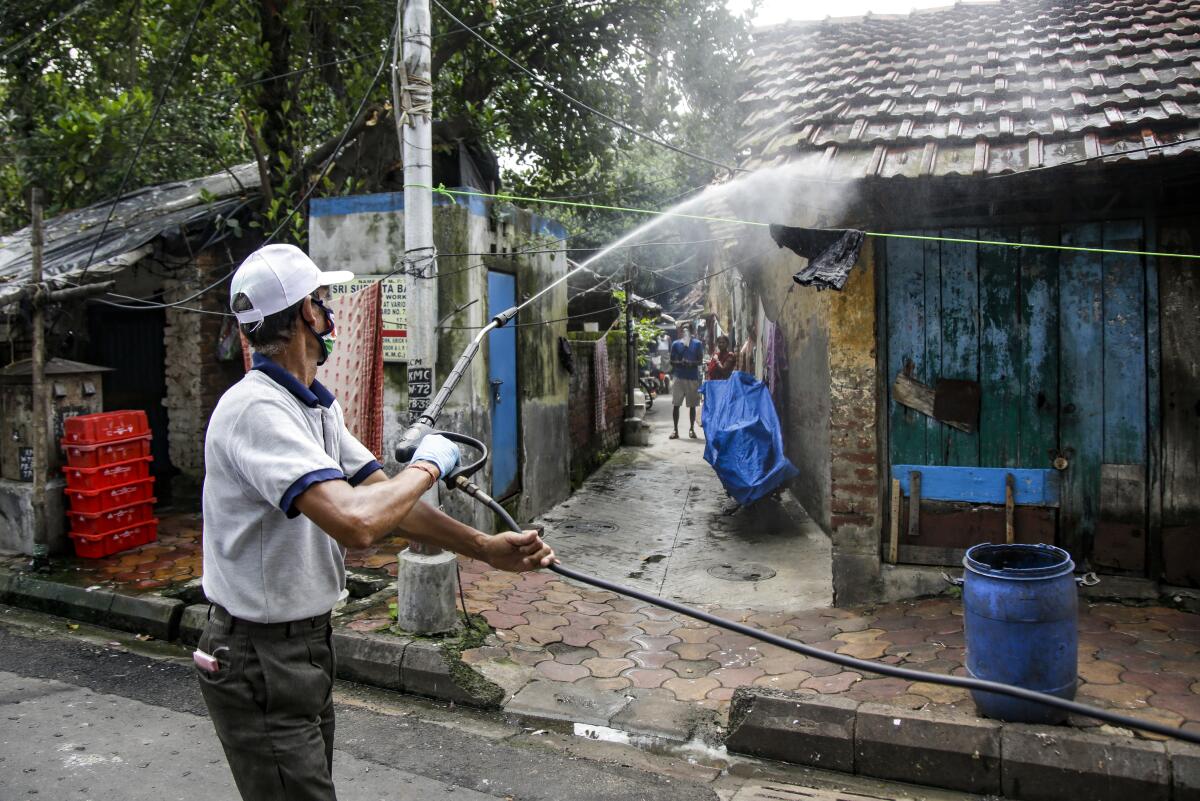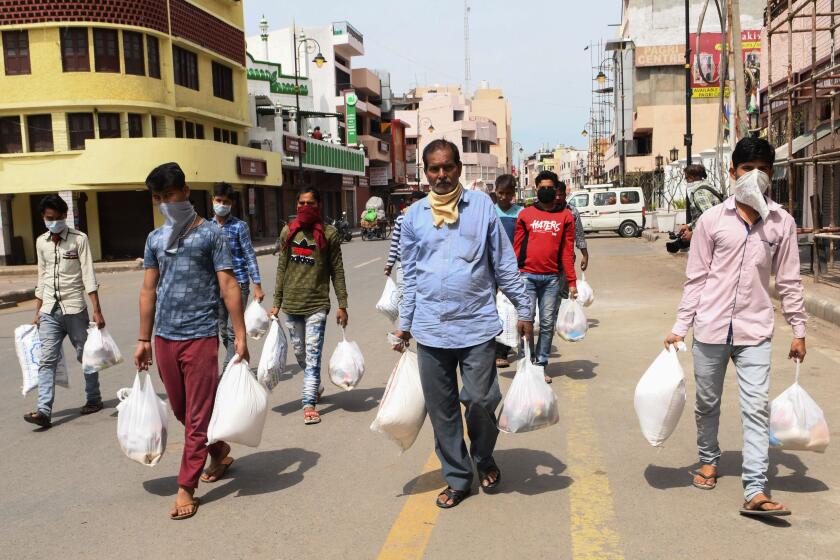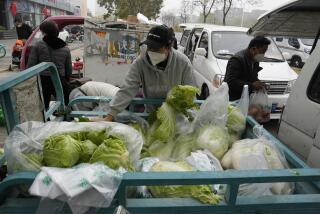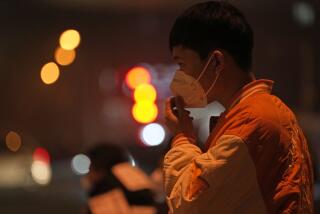India reimposes local lockdowns as coronavirus cases near 1 million

- Share via
NEW DELHI — As India’s coronavirus caseload approaches 1 million, lockdowns are being reimposed in parts of the country as governments try to shield the health system from being overwhelmed.
Indian authorities Wednesday reported nearly 30,000 new coronavirus cases and 582 more deaths, raising the country’s totals to more than 936,000 cases and over 24,000 fatalities. The actual numbers, as elsewhere in the world, are likely far higher because of limited testing and poor surveillance, experts say.
A two-week lockdown starting Thursday has been imposed in Bihar, a poverty-stricken eastern state with a population of 128 million and a fragile healthcare system. Since Saturday, Bihar has recorded more than 1,000 coronavirus cases every day, even with limited testing.
Nearly 2.5 million poor migrant workers who were stranded during India’s initial nationwide lockdown have returned to Bihar after losing their jobs in large cities.
In Bangalore, a key technology hub in southern India where offices for major tech companies like Amazon and Apple are located, the government ordered a weeklong lockdown that began Tuesday evening.
The initial boost that India’s economy received in June after the national lockdown was relaxed is being halted by these localized lockdowns in high-risk areas, experts say. Economic indicators such as labor participation rates and electricity consumption are down this month compared with June, according to the Center for Monitoring Indian Economy, an independent think-tank.
A three-week lockdown affecting 1.3 billion people has unleashed chaos as stranded migrant workers sleep in streets and police beat curfew-breakers.
India’s minister for small and medium businesses, Nitin Gadkari, said last week that experts were predicting a loss of $133.3 billion in the next year.
Authorities are now increasingly trying to localize their lockdowns to shield the economy from further losses, and nearly a dozen states are imposing targeted clampdowns in areas where many cases have been detected. Referred to as “containment zones” by public health officials, these can be so small as to consist of only a few houses on a street in New Delhi, the capital.
Jayaprakash Muliyil, an epidemiologist at Christian Medical College in southern India, warned that the country’s actual death toll from the coronavirus could be much higher because of the absence of a robust mechanism to report deaths in rural areas. “We don’t have the infrastructure,” he said.
Dr. Ashish Jha, director of Harvard’s Global Health Institute, said that, with new cases accelerating, India’s strategy must focus on keeping case numbers as low as possible and saving as many lives as it could.
The executive order has left workers, most of them highly skilled, and their families confused -- and depressed -- about what comes next.
“The standard stuff is the standard stuff: You have got to continue testing and isolation. ... Make sure there are few to no indoor gatherings,” he said.
Jha warned that India must ensure it continues stocking up on supplies and it has enough beds for people who will need to be hospitalized in the coming days.
“You can’t overprepare,” he said.
More to Read
Sign up for Essential California
The most important California stories and recommendations in your inbox every morning.
You may occasionally receive promotional content from the Los Angeles Times.











